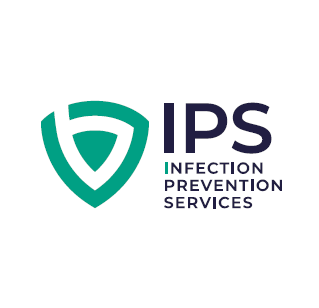The Fight Against Superbugs: How The Global Report On Infection Prevention And Control 2024 Can Help Us Win In Aged Care
Introduction: The Silent Threat in Aged Care
- Key takeaway: HAIs and antimicrobial resistance (AMR) significantly impact aged care, requiring immediate attention.
Understanding the Global Report on Infection Prevention and Control 2024
The Global Report on Infection
Prevention and Control 2024 offers a comprehensive analysis of IPC programs
worldwide. Published by the World Health Organization (WHO), this report aims
to guide policymakers, healthcare managers, and IPC professionals in enhancing
safety within healthcare settings. It emphasises evidence-based strategies to
reduce HAIs and AMR, ensuring quality care for all residents.
Key
findings from the report include:
- HAIs continue to be among the most frequent adverse events in the delivery of health services and have the highest burden in low- and middle-income countries.
- Multimodal improvement strategies (MMIS) are central to the WHO's core components for effective IPC.
- IPC interventions implemented in health care facilities, using MMIS with national coordination, could potentially avert 821,000 deaths per year up to 2050.
The WHO global IPC strategy includes eight strategic directions serving as the backbone for the Global Action Plan and Monitoring Framework (GAP/MF) for IPC.
Why
this matters: The report provides a framework for
global action, but its insights are most effective when applied to local
situations, to protect those most at risk.
Why Aged Care is Particularly Vulnerable
Aged care facilities are uniquely susceptible to outbreaks due to several factors. Older adults often have weakened immune systems, making them more prone to infections. Close living quarters facilitate the rapid spread of pathogens, and residents may have chronic conditions requiring frequent medical interventions, thus increasing their risk of HAIs. Therefore, basic infection prevention and control is not just a recommendation but an absolute necessity in these settings.
- Example: A study in the European Union has highlighted that HAIs constituted 70.9% of all cases of infections with antibiotic-resistant bacteria.
Practical Infection Prevention and Control Guidelines for Aged Care
To combat antibiotic-resistant superbugs
effectively, aged care facilities must implement stringent infection prevention
and control guidelines. Here are some essential measures:
Hand Hygiene: Enforce rigorous hand hygiene protocols for all staff, residents, and visitors, with readily available hand sanitisers.
- Example: The 2024 JMP report on WASH in health care facilities revealed that 43% lacked hand hygiene services.
Environmental Cleaning: Maintain a strict cleaning and disinfection schedule, paying special attention to high-touch surfaces.
Respiratory Hygiene: Promote covering coughs and sneezes and provide tissues and waste receptacles throughout the facility.
Isolation Protocols: Establish clear procedures for isolating residents with suspected or confirmed infections to prevent further spread.
Personal Protective Equipment (PPE): Ensure proper use of PPE, including gloves and masks, by all staff members.
Why
this matters: Consistent application of these
guidelines can significantly reduce the transmission of infections.
Creating and Implementing an Effective Infection Prevention and Control Work Plan
A comprehensive Infection Prevention and Control Work Plan is crucial for sustained success. This plan should be tailored to the specific needs of the aged care facility and include the following elements:
- Dedicated Budget: Allocate sufficient financial resources for IPC programs, including training, supplies, and equipment
- Trained Staff: Designate an IPC focal point (IPC Lead) responsible for overseeing and implementing the plan, supported by ongoing training for all staff members.
- Regular Audits: Conduct routine audits to assess compliance with IPC practices and identify areas for improvement
- Target: Increase the presence of strategic plans and systems for IPC monitoring.
- Example:
Facilities with well-defined plans for monitoring key IPC indicators have
better outcomes.
The Role of Multimodal Strategies (MMIS) in Aged Care
- System Change: Ensure the availability of necessary infrastructure and supplies.
- Education and Training: Provide continuous education for healthcare workers.
- Monitoring: Track IPC practices, processes, and outcomes, providing data feedback.
- Reminders: Use workplace reminders and communications to reinforce best practices.
- Culture Change: Foster a safety climate that prioritises IPC at all levels.
- Example: Implementing a hand hygiene program that combines education, readily available sanitiser, and regular monitoring can significantly improve compliance.
Empowering Aged Care Facilities to Win the Fight
Actionable Steps:
- For Facilities: Conduct thorough audits of current IPC practices, invest in comprehensive training programs, and implement MMIS to drive sustainable improvements.
- For Families: Inquire about the facility's IPC protocols, ensure staff compliance with hand hygiene, and advocate for enhanced care standards.
Call-to-Action Options:
- Stay Informed: Subscribe to our newsletter for the latest updates on infection prevention and control in aged care.
- Take Action: Download our checklist by clicking on the "Download Checklist" button below for evaluating IPC practices in your facility.
- Share Your Story: Join our community forum to share your experiences and insights on improving aged care safety.
- Contact your local representatives: Advocate for enhanced care standards.
By working together, we can empower aged care facilities to win the fight against superbugs and ensure a safe, healthy environment for all residents.
Conclusion
Explore our related posts for more in-depth strategies and real-world examples of successful infection prevention and control measures.
Lyndon Forrest
I am a passionate and visionary leader who has been working in the field of infection prevention and control in aged care for almost 30 years. I am one of the co-founders and the current Managing Director and CEO of Bug Control New Zealand and Australia, the premium provider of infection prevention and control services in aged care. I lead a team that is driven by a common purpose: to help aged care leaders and staff protect their residents from infections and create a healthier future for them.
I am building a business that focuses on our clients and solving their problems. We are focused on building a world-class service in aged care. We focus on being better, not bigger, which means anything we do is for our clients.
Erica Callaghan
Erica Callaghan is a dedicated professional with a rich background in agriculture and nutrient management. Growing up on her family's farm in Mid Canterbury, she developed a deep passion for farming. She currently resides on her partner's arable property in South Canterbury.
In 2017, Erica joined the Farm Sustainability team, focusing on nutrient management and environmental stewardship. In February 2024, she became the Manager of Marketing and Sales at Bug Control New Zealand - Infection Prevention Services, where her passion now includes improving infection prevention outcomes.
Outside of work, Erica loves cooking and traveling, often combining her culinary interests with her explorations in Italy and Vietnam. She enjoys entertaining family and friends and remains actively involved in farm activities, especially during harvest season.
Toni Sherriff
Toni is a Registered Nurse with extensive experience in Infection Prevention and Control. Her career began as a kitchen hand and caregiver in Aged Care facilities, followed by earning a Bachelor of Nursing.
Toni has significant experience, having worked in Brisbane’s Infectious Diseases ward before returning home to New Zealand, where she continued her career as a Clinical Nurse Specialist in Infection Prevention and Control within Te Whatu Ora (Health NZ).
Toni brings her expertise and dedication to our team, which is instrumental in providing top-tier infection prevention solutions to our clients.
Julie Hadfield
Julie is experienced in Accounts & Payroll Administration & after a long career in both the Financial & Local Government Sectors, is now working with our team. Julie brings her strong time management & organisational skills to our team, which is important to keep the company running in the background to enable the rest of our team to provide top notch service to all of our clients.
Andrea Murray
I attended Otago University in NZ and graduated as a Dental Surgeon. After 40 years in the profession, I retired in 2022. Infection prevention knowledge was part of everyday practice, dealing with sterilisation, hand hygiene, and cleaning.
Before retiring, I began doing some editing and proofreading for Bug Control as I am interested in the subject and in the English language. During the COVID-19 lockdown, I attended the ACIPC course "Introduction to Infection Prevention and Control", which increased my interest in the subject. I now work part-time as the Content Editor for the company.
Princess
Princess began her career as a dedicated Customer Service Representative, honing her communication and problem-solving skills. She later transitioned into a Literary Specialist role, where she developed a keen eye for detail. Her journey then led her to a Sales Specialist position, where she excelled in client relations.
Now, as a Customer Support professional in Infection Prevention Services. Princess focuses on ensuring customer satisfaction, building loyalty, and enhancing the overall customer journey.
Dianne Newey
With over 35 years of experience as a Registered Nurse, I'm now applying all my experience and skills as a Senior Infection Prevention and Control Consultant with Bug Control Infection Prevention Advisory Services.
This is through IP&C education, IP&C environmental audits and reports, IP&C policy and procedure review and development and consultancy on infection prevention and control issues. When I’m not working, I spend time with my family and in my garden, where I grow all my own veggies.
Caoimhe (Keva) Stewart
Caoimhe is the Manager of Customer Service at Bug Control | Infection Prevention Services, where she ensures that learners have a seamless and supportive experience. With her previous experience as a Registered Nurse in both the UK and Australia, Caoimhe brings a deep understanding of healthcare to her role. Before joining Bug Control IPS Services, she worked in a variety of nursing settings, including Occupational Health, Palliative Care, and Community Nursing, providing her with the ability to empathise with learners and understand the challenges they face.
Bridgette Mackie
Bridgette is an experienced New Zealand Registered Nurse, qualified Healthcare Auditor, and Healthcare Educator with a strong background in clinical quality, competency assessment, and infection prevention. She has led large-scale OSCE and CAP training programmes for internationally qualified nurses, developed sector-specific educational resources, and coordinated HealthCERT audit preparation in the surgical sector.
Known for her engaging teaching style and genuine passion for supporting learners, Bridgette excels at making complex topics accessible and relevant. She blends operational leadership with a deep commitment to professional development and safe, effective practice.

